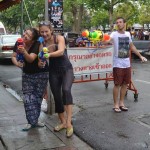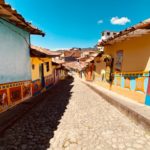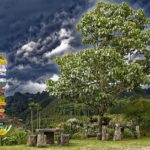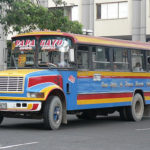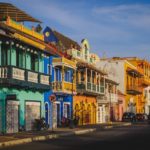Carnival in Pasto, Colombia
When planning my three-month trip to Colombia, I earmarked the Blancos y Negros Carnival in Pasto as a must-visit. Now that I have travelled the length of the country I can safely say that this festival was one of the highlights of my time here.
As a woman who likes to party, to get messy and to dance, I thought this carnival would be a walk in the park. But let me tell you, I have never been to a party like this in my life. It is not for the faint hearted!
Imagine an old colonial city with stunning architecture; charmingly ramshackle streets and town squares, all set against a dazzling backdrop of mountains. That’s Pasto.
Pasto is a reference to the name of the indigenous people who have inhabited the Spondulus region for hundreds of years. The carnival is the largest celebration in southern Colombia, and one of South America’s oldest festivals. It dates back to the time of Spanish rule, when slaves were allowed to party on 5 January, with their masters showing approval by painting their faces black. In turn, the slaves painted their faces white the following day.
Check out Pink Pangea’s Writing, Yoga, and Meditation Retreats.
The tradition is still faithfully maintained, and over the festival week (2-7 January) the city goes wild with locals and tourists painting, spraying and dusting one another with grease, cans of white foam, bags of talcum powder, flour and tubes of multi-colored face paint. It’s mayhem! Most incredible is the tolerance and respect demonstrated by people of all ages as they are ‘attacked’ by strangers, but always with a sense of safety and fun. They play together like children and love a good gringo who’s game for a laugh, so watch your back and be prepared to participate! Even La Policia are patient and smiling.
The carnival prides itself on engaging some of the world’s best Carnival Artists, who create floats portraying legends and traditions, often mixed in with humorous references to current political events in Colombia. It is a breathtaking display of craftsmanship, and there are prizes for the most innovative designs, judged by an international panel.
In 2001, the Carnival was declared a Cultural Heritage of the Nation by the Colombian Congress, and in 2009 it was awarded inclusion in UNESCO’s World Cultural Heritage list.
The carnival dates back to the time of Spanish rule, when slaves were allowed to party on 5 January, with their masters showing approval by painting their faces black
The highlight is the Great Parade, led by the carnival queen, which runs nearly 7 km through the streets of downtown, the Plaza del Carnaval and some of the avenues of the periphery, by the so-called Senda del Carnaval (Carnival Path). The procession begins with Comparsas (brightly costumed dancing troupes) and Murgas (bands of musicians) parading through the streets playing Salsa, Cumbia and Merengue while the public throw confetti and streamers, cheering ¡Viva Pasto! Then come the floats, headed by giant, brightly colored figures or caricatures with incredibly articulate movement. They get bigger and bigger throughout the day, and are amazing works of art. They dominate the streets while dancing troupes throw sweets to the crowds, music blares and the city celebrates.
When the parades are over there is still plenty to do, as the main plazas host stages with live acts, and the bars and clubs stay open late for the revelers. Many eople choose to party on the streets till dawn.
Here are some tips for enjoying the Pasto carnival to the max:
- Wear old clothes you’re prepared to get filthy. Cheap ponchos are for sale everywhere, too.
- Hats or hoods are recommended.
- Protect your eyes with shades or goggles.
- Keep valuables safe as it would be easy for opportunist thieves to take advantage.
- Book accommodation in advance to ensure a place to stay. Many locals offer Air BnB accommodation
- Pasto is 2500m above sea level, so pack a layer to keep warm.

